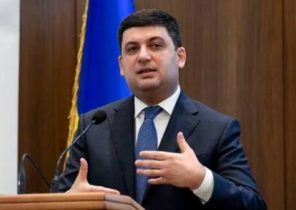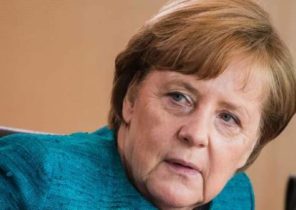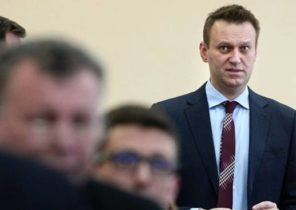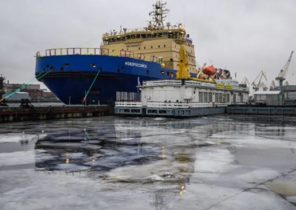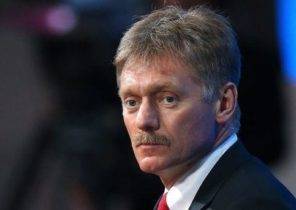
The destruction of Syria, which began exactly six years ago, shows no signs of abating, while the regime of Bashar al-Assad, supported by Russia and Iran, captured in December last year, the last of the urban rebel strongholds in Eastern Aleppo.
Agreement on a partial ceasefire is very heterogeneous. A striking combination of different forces — including Russian, American, Iranian, and Turkish and Kurdish militias and Iranian-backed militant Shiite groups — focused on the battlefield and periodically combine their efforts in the fight against “Islamic state” (banned in Russia organization — approx. ed.). “Al-Qaeda” (banned in Russia organization — approx. ed.) is still able to strike at the heart of the Syrian regime, as evidenced by the deadly attack on the military intelligence in HOMS last month.
Mainstream rebels regroup to protect themselves. The talk of withdrawal from war lead nowhere. Russian President Vladimir Putin, air force played a crucial role in the rescue of the supporters of Assad and helped to turn Aleppo into rubble, believes that the time has come to tell Europe that it financed the reconstruction of Syria. This is a cheeky offer.
The expression “broke, your” became popular geopolitical phrase, after the United States in 2003, used the elephant to release a China shop called Iraq. American soldiers are still in this country, despite already spent hundreds of billions of dollars, and continue to struggle with the most implacable jihadists. However, in translation to Russian in Syria that expression, apparently, is: “we broke it, you pay to own that we and our friends”. The Kremlin, of course, sees signs that the American President Donald trump refuses to attempt to throw President Assad from his post.
Moreover, in Europe, apparently, is a large-scale political panic about any new influx of migrants and refugees. However, the confidence of Moscow — and Tehran — should not conceal the fact that they face in Syria with the real and costly dilemma. First, the question of to what extent the Assad government controls about 35% of Syrian territory, seems to be ambiguous. The lack of human resources, this minority regime has made it dependent on Russia, Iran, and influential paramilitary groups like the Lebanese Hezbollah.
Damascus is forced to transfer local control of mosaic in composition of the regional military and administrative leaders and police, private armies and extortionists — they all have their interest in appealing the distortions of the war economy, characterized by the deprivation of a large part of Syrians, more than half of whom were forced to leave their homes because of the war. This situation is not stable.
Second, to what extent Russia and Iran want to help Assad supporters to break out their mini-state and re-conquer the rest of Syria? Syria itself, most likely does not have the necessary number of people to regain the Eastern part of Syria and to place its military garrison. Look at how located in the Central part of Palmyra passed from hand to hand — the Syrian regime recently recaptured this Greco-Roman gem, which in December for the second time was under the control of the “Islamic state”, as the focus was moved to Aleppo.
In addition, Palmyra had been re-captured after the Americans hit were there militants of the “Islamic state”. The Syrian conflict is fickle and constantly changing its shape, however, for President Assad would be foolish to stake the Palace, hoping to recreate such a strange coalition. Thirdly, the alleged control of the “useful Syria” is a false comfort. In addition, from the point of view of security, a significant part of the rest of the Syrian territory infected by the spirit of jihadism, it is, in fact, means that the East of the country is almost “useless” wilderness.
But it’s not. Survival existing for almost 50 years the Assad regime was based on energy resources and crops East of the country. The province of raqqa, Hasaka and Deir ez-Zor up to 2010, i.e. before the uprising, produced 60% of the grain of the country, 75% cotton, all its oil and natural gas. The East of the country can not be called useless, and it is a very necessary mode, restoring the minimum self-sufficiency.
Syrian power electricity generation dependent on gas fields in the East, make up a quarter of what there was before the war. Russia and Iran will be forced to fight in order to regain control of the whole of Syria. This will require significant costs, costs of blood and cash. As a result, the autonomy of Mr. Assad, presently under the tutelage of these two States would be substantially increased.
However, the protectorate of Russia and Iran on one part of Syria is already expensive. High-ranking military and government officials of Arab States, saying that only Iran in 2013 and 2014, was forced to spend on Syria at $ 8 billion. Russia and Iran depend on oil and natural gas, and today the prices are low, and, moreover, both these States are under international sanctions.
It is true that Moscow has leased a Mediterranean port facilities in Tartus, which it intends to expand, as well as military air base in Latakia. Iran’s revolutionary guard — the business Empire, as well as the expeditionary force has secured a potentially lucrative mobile telecommunications services, phosphate mining, port, and contracts in the field of electricity production. However, the reconstruction of Syria, apparently, will need to spend at least $ 250 billion, and maybe twice.
There will be no international queue from among those wishing to take part in it, if not there will be stability and agreement about power-sharing. Those who live in Brussels and in Washington, DC “realism” requires the introduction of more data from reality. In particular, the Europeans desperately interested in expanding flows of refugees back to Syria, should clearly understand that some of what is happening there demographic changes in the Syrian regime intends to make permanent. The patrons of this mode will also receive a time for reflection about what kind of chaos they got.
The destruction of Syria, which began exactly six years ago, shows no signs of abating, while the regime of Bashar al-Assad, supported by Russia and Iran, captured in December last year, the last of the urban rebel strongholds in Eastern Aleppo. Agreement on a partial ceasefire is very heterogeneous. Damascus is forced to transfer local control of mosaic in composition of the regional military and administrative leaders and militia, the war.


